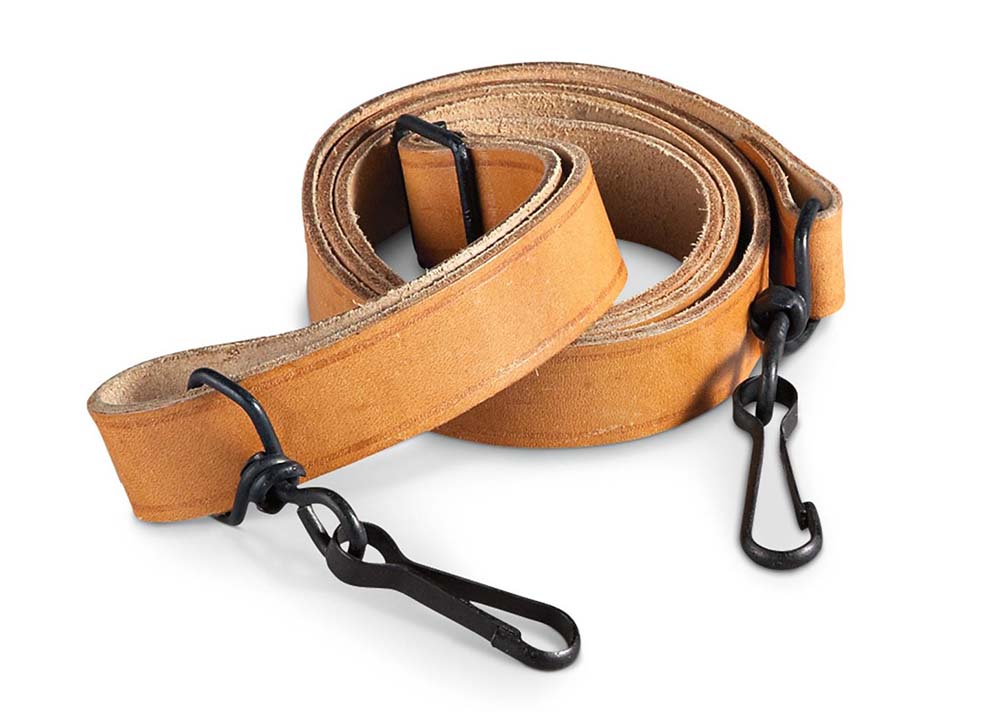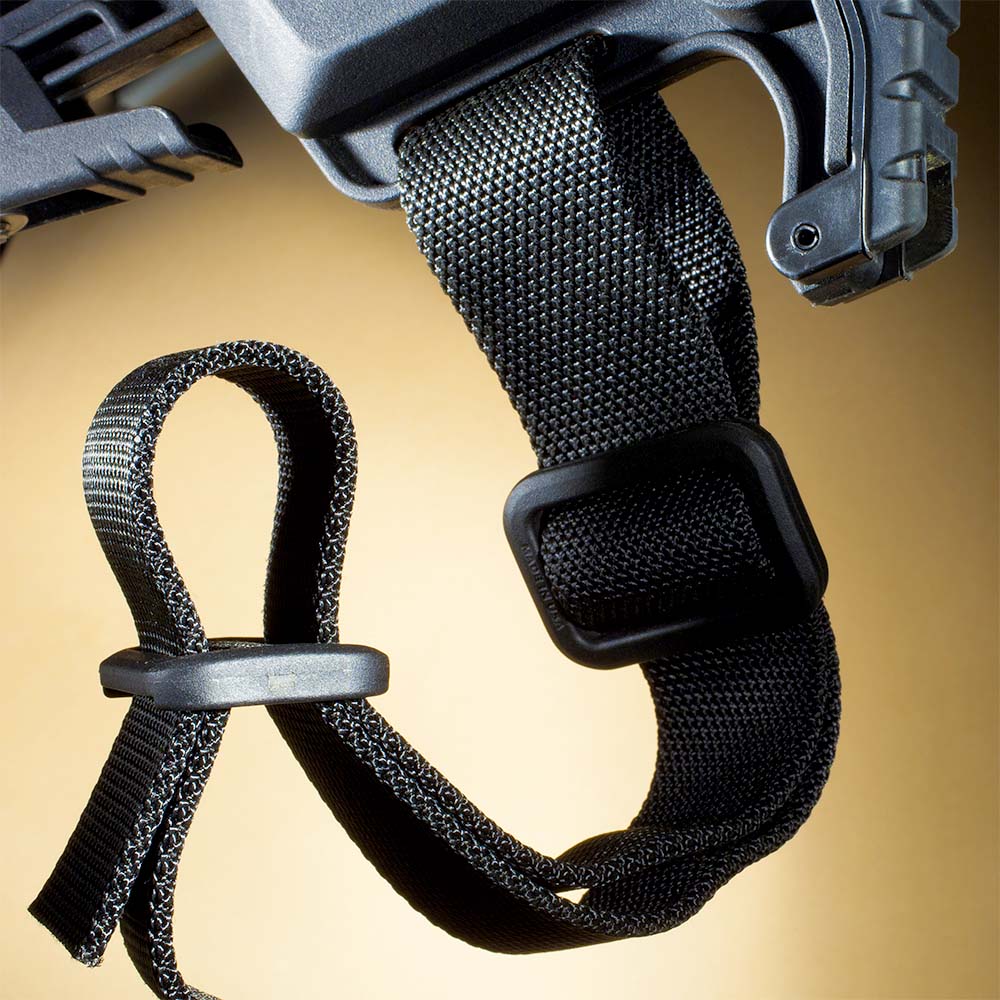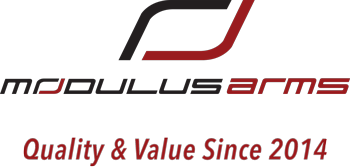Posted by Modulus Arms on 4th Feb 2022
Best Rifle Slings
Rifle slings are one of the earliest adoptions of firearm features preceded by perhaps only the barrel. It is the simplest solution to comfortably carrying a rifle over long distances. Rifle slings can be used for multiple purposes from aiding your aim in a resting position for your rifle, or allowing you to multitask without losing quick access to your primary weapon but at the end of the day, it’s really just a way to secure a firearm to a person’s body.
That being said, rifle slings have come a long way from just simple, non adjustable straps of canvas. Today, you can find slings of various configurations to suit the techniques of hunting, general recreation, tactical situations and in the competition world. In this blog, we explore some of the best rifle sling options available on the market today.
Sling Material
There are two main material compositions that slings in today’s market are built out of: neoprene/reinforced nylon and leather. Some of the former utilize cordura, 550 cord, and other blends of polyester to produce a flexible and durable gun sling. Stress bearing sections of the rifle sling usually consist of high strength aluminum attachment components to ensure that your sling will not fail. This is critical to ensure that your rifle sling will hold up against being tensioned against your supporting arm and during rifle to pistol transitions. Some slings however do come in a bungee-like material for a truly elastic rifle sling. The last thing you want is to drop your gun, even though it should technically withstand the fall without a problem, our focus is being able to maintain control over our weapon.
Best Rifle Slings: Leather vs Nylon Material
Leather rifle slings can have an elastic, springy feeling to them and at times offer more grip in your hands compared to slings made out of nylon or other synthetic materials. Although leather rifle slings are stylish in their own appeal, buyers should know that their lengths can stretch out over time as the quality can wane with normal wear and tear. Nylon rifle slings, on the other hand, can potentially last a much longer period of time if taken care of.
Advantages of a Leather Rifle Sling

- More traction
- More elasticity
- Quality feel
- It’s a vibe
Advantages of a Nylon Rifle Sling

- More durability
- Doesn’t stretch out over the years
- Less weight
- Adjustability in length
What to Look For In A Sling?
There are several features to look for that will impact your rifle sling’s maneuverability and comfort.
- Padded sleeves to distribute weight evenly and comfortably across your shoulder and torso
- Ideally be able to have your rifle slung for long periods of time while causing minimal pain or soreness
- Width of at least 1.25” to prevent the strap from folding in on itself
- Durable enough to withstand the dynamic stress of being tossed around on your body
- Is it long enough? Or is it too long?
What Length Should I Have With My Rifle Sling?
The best rifle sling length will vary from one shooter to another which is why there are so many different kinds of slings on the market today. If you’re going to be doing any sort of tactical shooting or training then it’s probably going to involve a lot of transitions. Perhaps you’re out on a leisurely stroll while on hunt and have the rifle on your backside; switching the rifle to be in your hands and at a ‘ready’ presentation should be quick and precise like muscle memory. Maybe you anticipate the need to transition shooting from your dominant side to your weak side often. All these situations and more will work with some slings better than others. Here are the slings that should have your attention.
Magpul Slings - $34.95
The MS1 Sling is a fantastic and affordable $34.95 option for a durable two-point sling that holds its own against corrosion and harsh outdoor elements. Made from the lessons of the previous generation of Magpul slings, the GEN2 MS1 Sling comes in a padded version as the MS1 Padded Sling and was designed around the MS1 Slider with minimal snag hazards for rapid length adjustments.
Magpul also offers a minimal version of the MSI Sling, the RLS. Additionally, Magpul’s one-point sling comes with either a paraclip attachment or a QD (Quick Detach) mating system. They’re the MS3 Sling and MS4 Sling respectively.
Ferro Concepts - $58.00
Priced at $58.00, the Slingster is a proven rifle sling for quick adjustments and build quality that performs just as well and is also available in multicam and multicam black. For many fans of the Slingster however, a recurring problem lies in the metal pull tab scratching and snagging on their rifle. No Quarter Defense makes a Sling Silencer and Tail Tamer to protect your rifle’s finish from the metal slider tab.
Haley Strategic - $99.00
Haley Strategic has a reputation for excellent stitch work and their slings are no exception to this standard. Coming in at $99.00, the D3 Sling can be configured into a one-point rifle sling or two-point rifle sling quickly. This change is done via removing the D3 Sling’s QD attachment from the rifle’s front and attaching it to a QD slot towards the middle of the sling to form a harness. Users have reported that the D3 loosens with ease but to tighten takes noticeably more effort.
T-Rex Arms - $55.00
Next up is the T.REX Sling at $55.00 offered by T-Rex Arms with an interesting feature in tightening the sling length. The 500D pull tab adjustment can be configured to be tightened when pulled forwards or backwards. This can be useful for users who are not yet accustomed to the standard forward direction and may enjoy a faster technique for shouldering a rifle faster. The T.REX Sling does not come with any mounting hardware and has an open loop one both ends, leaving the mounting option up to the user’s discretion.
What Sling Mount Attachments Are Best?
There are two primary patterns of attaching your sling to your rifle: paraclip and quick disconnect. The paraclip and QD attachment both offer rapid disconnections in a matter of seconds, however they offer different degrees of rotation. The QD mount rotates on its own axis indefinitely and will work with you as you maneuver your rifle. Others may get all of the rotational movement they need from a paraclip mount and prefer to work with the paraclip’s lower profile shape.
QD mounts also require a fitting base to be drilled into your rifle stock or for the mount base to be adapted to fit the standard swivel studs, but many stocks today come with QD base slots and even swivels installed already. For the frontal section of your rifle, the QD base mounts as well as paraclip mounts can be attached via picatinny or MLOK. These bases are featured with full-rotating functions as well as non-rotating functions.
For AR pattern rifles, the buffer tube ring commonly comes with an opening for a sling to pass through. This opening is also on many primary patterns of AR stocks. Whichever type of mounting hardware you use, the sling's frontal mounting base should be affixed to either the top or sides. If you mount the base to the bottom, you'll find yourself frustrated with the rifle constantly going belly up every time you allow the rifle to rest on its sling.
What are the Advantages of A One-Point Sling?
A one point sling works ideally and well when shooting off-hand as you switch shoulders while peeking from the other side of the barrier. The lack of a strap obstructing your supporting hand when you aren’t using the supportive tension can be useful especially for pump action shotguns. Although they are by no means the best rifle sling configuration, one-point slings work well with compact weapon platforms. In every other category however, the one-point sling falls short of its two-point brethren.
With a one-point rifle sling there is no support for the barrel end of the rifle and means that the muzzle will always end up pointing at the ground when dropped. Without constantly being controlled or held, the likelihood of your muzzle scraping the ground or bumping into objects around you is pretty high. Yes, this means the rifle will dangle like a wind chime off of your body, making climbing and irregular movements that require both hands put you at a disadvantage. Depending on your rifle’s length, your rifle can become a hazard to your knees with a one-point sling as it comes swinging down during quick transitions to a pistol. However, with stockless AR pistols or pistol caliber carbines, the one point sling becomes incredibly viable.
Why Use A Two-Point Sling?
Two-point slings are the most common configuration seen and for the reason being that it excels in keeping your rifle in rest from obstructing your gear and offers stability along with easy rifle to pistol transitions. The best rifle length for the former is not the same for the latter, which is why a sling you can easily adjust at a moment’s notice is critical for a two-point sling. The primary downside to a two-point sling is that shooting off-handed often means having to switch how you wear the sling every time you change sides.
Why Use A Three-Point Sling?
Three-point slings use an extra loop to secure your rifle in a manner kind of more like a harness. This configuration provides great rifle retention and stability when shooting. The loop can be used better to tension against your arm as it also uses your upper body to resist your supporting arm. Usually there’s an extra strap forming the loop that has been commonly reported to hit the ejection port for left-handed shooters and snag on controls for right-handed shooters. They are also not ideal for any shooters that plan on wearing chest rigs or a plate carrier as it is not easy to accommodate. However, this still largely comes down to preference and what you train with. You can theoretically make any sling work for you as long as you practice with it.
Build Your Next Rifle With Modulus Arms
Slings are hard to get wrong as far as AR15 parts and accessories go. If you’re looking to complete a rifle build try out our selection of 80 lowers and our user-experience friendly Router Jig Extreme to mill out any receiver calibers of your choice. Feel free to browse our furniture and a lower parts kit to finish off your build.

